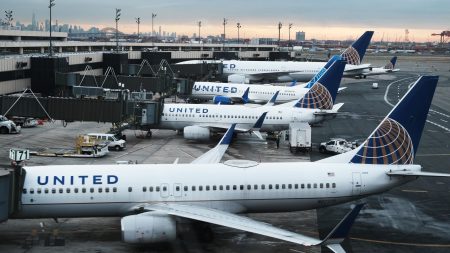Advertising has a diversity issue. This is not new news. However, a recent report from the American Association of Advertising Agencies, the U.S. trade association for advertising agencies commonly called the 4A’s, has given us new reasons to revisit the issue.
The report reveals that the number of agencies owned or run by White CEOs increased from 73% in 2021 to 90% in 2022. For context, this period followed the great awakening, when White America realized the injustices of the Black Americans—and other marginalized communities—in the wake of George Floyd’s public execution. This was an era when brands donned black Instagram profile pics as an act of social solidarity, corporations raced to hire more DEI professionals, and ad agencies mandated more representation in their offices and on production sets. Yet, during this same period, leadership inside these organizations became more white—not more diverse.
According to the 4A’s report, advertising is a predominately white institution. This has long been the case and the subject of much concern in the industry. Organizations like AdColor and the Marcus Graham Project have worked tirelessly to address the diversity problem with programming and structures to onboard and advocate for more people of color in the industry. Their work has been invaluable and evidenced by the increase of diverse talent in advertising. However, in 2022, White professionals comprised 64.63% of the industry’s total employee population. The remainder of the population consisted of 12.41% Hispanic or LatinX employees, 11.33% Asian, 6.99% Black, 2.88% Middle Eastern, 0.3% Native American and Pacific Islander, and the rest unspecified.
In most cases, the percentages of minority employees were up from the previous year, which should be celebrated. These numbers indicate that the work is paying off. The report also asserts that more DEI professionals were hired in 2022—most of which are people of color—and the number of women ad professionals was slightly up from the previous year. Again, all positive signs of change, albeit marginal.
The want for change in the industry is more than just a moral imperative. The evidence is clear: diversity leads to better ideas which lead to better outcomes. So is the same with advertising. The logic is that increased representation provides a diversity of thought which helps infuse creative work with a keen understanding of the cultural nuances of a community that lead to consumer connections and subsequent consumption. This is a hallmark of the advertising industry. However, as the 4A’s report exposes, while more people of color were being hired into the advertising industry in 2022, 80.7% of advertising’s C-suite and executives were White, as were 77.56% of its VPs, SVPs, Managing Directors, and equivalents. This suggests that advertising has benefitted from the cultural proximity of people of color, yet these professionals do not experience the economic windfall of their impact. And that’s a problem.
This issue goes beyond diverse representation. It’s an issue of cultural exploitation, a form of appropriation where a dominant community uses another community’s cultural practices and products without reciprocity. In the case of advertising, diverse talent is used to unlock the cultural codes that drive commerce but are not adequately compensated, elevated, or positioned relative to their unique contribution. While advertising has faced criticism over the use of cultural appropriation in its external commercial work (think Pepsi’s “Live for Now” ad featuring Kendal Jenner that appropriated the Black Lives Matter Movement), we have yet to truly grapple with the form of cultural appropriation that is seemingly happening internally among its workers.
Tommy Johnson, CEO of MADE, argues that this has been an age-old practice in our country, where the cultural know-how of a community (particularly the Black community) is leveraged as a tool in service of economic gain by those with power. MADE is a mission-driven tech company that uses web 3.0 infrastructure to protect Black culture from commercial exploitation in the marketplace. Johnson’s work is at the heart of the discourse that the advertising industry needs to have. As he puts it, “DEI is a facade, driven by social and moral perceptions.” Since it is not directly placed within an economic context, he argues, we must extend the conversation of diversity beyond representation alone and focus on compensation, leadership opportunities, and ownership.
Johnson is not wrong. America has a long history of exploitative practices regarding the cultural production of marginalized communities. This is most noticeably evidenced when White America appropriated the folklore of Black Americans through the possession of Black musical art forms like jazz, rock and roll, rhythm and blues (R&B), electronic music, and rap. These works had been historically created by people of color who only marginally participated in the economic boom of its market performance. Similarly, the data suggests that ad agencies have exploited the work of people of color by tapping into their cultural understanding without providing them access to fully participate in its economic reward of their co-created production.
The 4A’s research also states that the number of non-White entry-level employees in advertising have generally increased over the year-long study. Again, another positive sign of change. A growing trend in the recruitment practices of advertisers has consisted of sourcing diverse talent outside of the industry to offset what might have been considered a talent pipeline problem. The idea is to identify diverse talent with cultural knowledge and attuned taste palettes that translate into the kind of creative work that might not have otherwise been capable by traditional advertising practitioners. They might not be “trained advertisers”, but they have their ear to the street and possess an uncanny instinct to understand what gets adopted in a community and what gets ignored.
They might come from cultural engines like the pop culture publisher Complex or streetwear brands like KITH or Supreme instead of another ad agency. Whatever their origins, they provide the agency with a level of cultural intimacy that most traditional advertising practitioners do not have. And it’s this intimacy that makes the difference between what is considered “cool” and what’s not, which ultimately influences what performs in the market and what doesn’t. Yet, despite the uniqueness of what they bring to the industry, their lack of traditional advertising experience itself typically excludes them from leadership opportunities and economic reward, thus creating a Sisyphus scenario that limits their ascension in the industry.
The 4A’s research unearths a staggering truth that the industry must address. It’s not enough to have representation without a path to advancement. While the creative works of the industry are continually informed by the cultural proximity of people of color, if these people aren’t given access to leadership opportunities in the organization, then their hiring is tantamount to an exploitative veneer.
Advertising definitely has a diversity issue, but this research suggests that diversity isn’t the most critical issue the industry needs to address in this moment. The industry is empirically more diverse with better representation of people of color—it’s not where it should be, but it’s better than what it once was thanks to organizations like AdColor and Marcus Graham. However, the unspoken problem in advertising has less to do with diversity on the surface and more to do with how diverse talent remains absent from the reward system of the institution by way of leadership roles and ownership opportunities. To ignore this fact is to ignore the access that people of color have given advertisers into a world that is not their own. This is the conversation we need to have in advertising as we continue the pursuit of a more diverse industry. We must put more emphasis on the economic “equity” and “inclusion” of DEI so that diverse talent might truly realize the impact of their works.
Read the full article here









